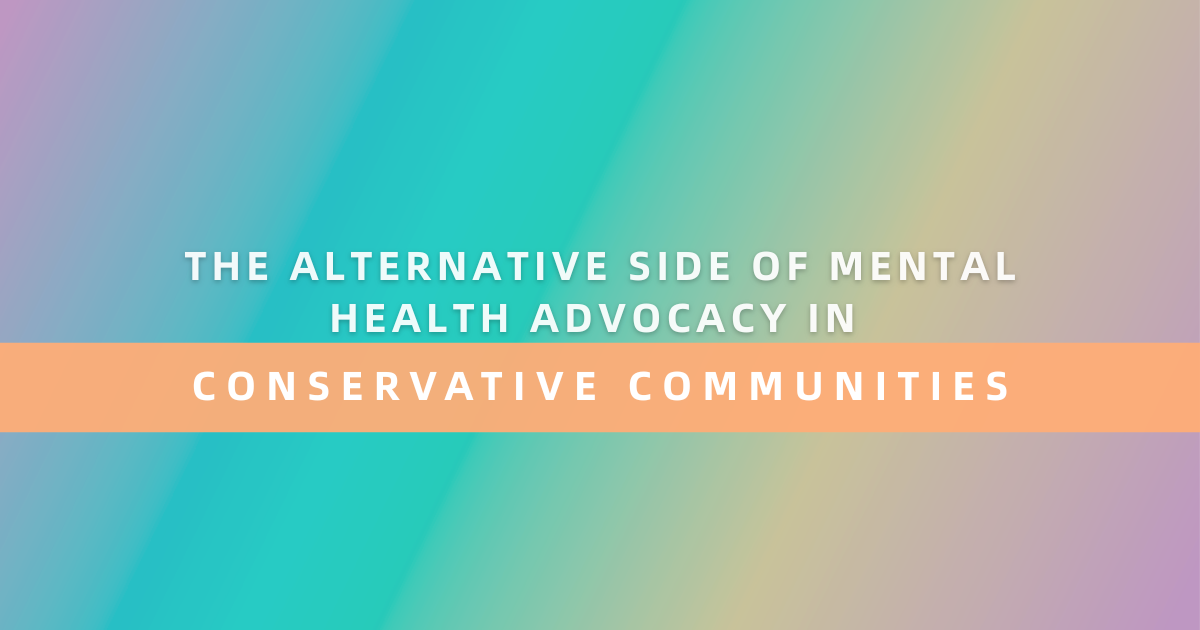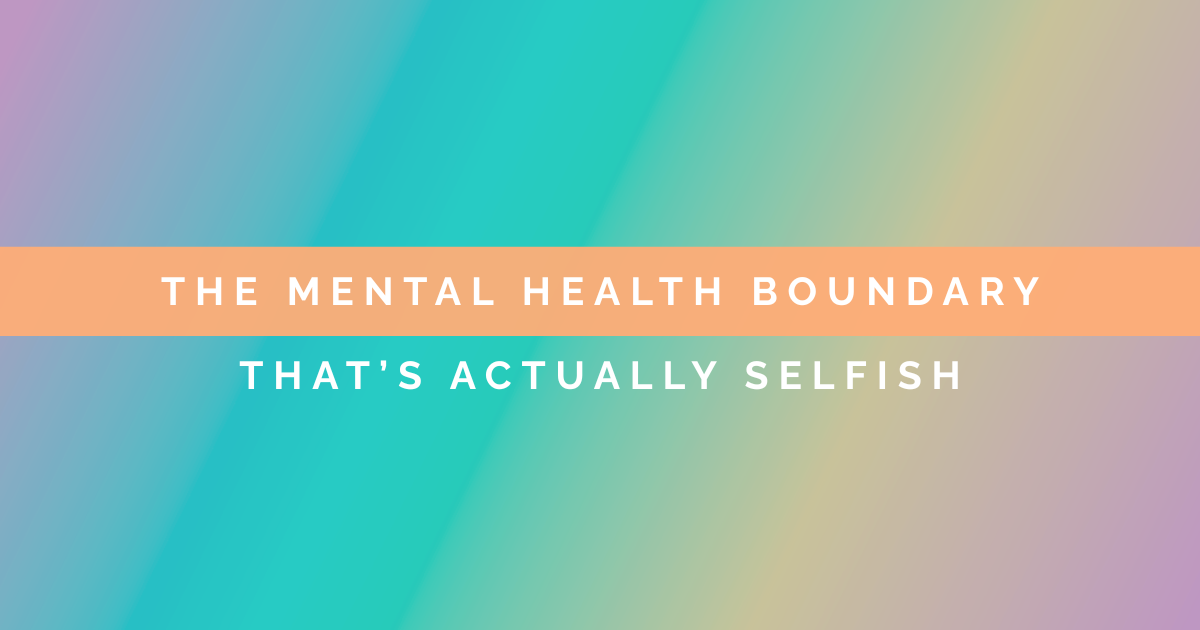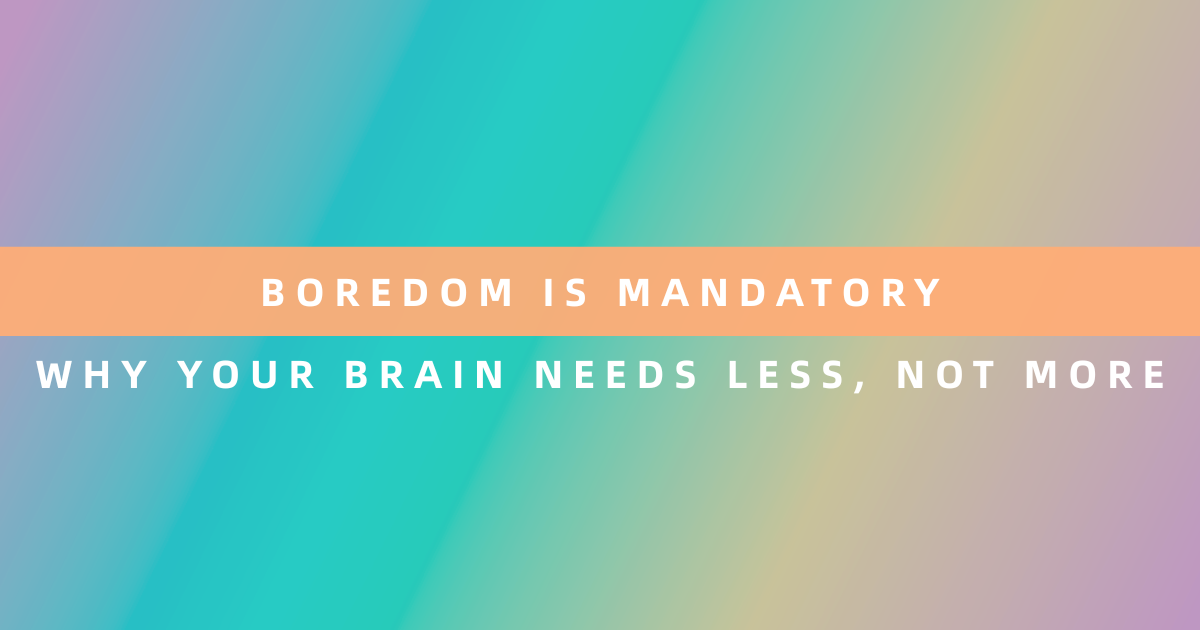Mental health advocates often find themselves facing unexpected resistance when working in conservative communities. You might arrive with the best intentions, armed with research about therapy benefits and destigmatization strategies, only to discover that your approach feels foreign or even threatening to the people you’re trying to help.
This disconnect creates a complex challenge for mental health advocates who genuinely want to support psychological well-being in all communities. Conservative communities often have different frameworks for understanding emotional struggles, different approaches to seeking help, and various values about privacy, family involvement, and professional intervention [1].
The tension becomes particularly acute when well-meaning advocates inadvertently dismiss or contradict deeply held religious beliefs, traditional family structures, or cultural practices that provide meaning and stability for community members. What feels like progressive mental health advocacy to outsiders can feel like cultural imperialism to people within conservative communities.
Many conservative communities have experienced mental health advocacy that seems to challenge their core values, promote individualistic approaches that conflict with their emphasis on family and community, or advocate for solutions that feel disconnected from their spiritual and cultural frameworks.
Yet these communities face the same mental health challenges as any other population, often with additional stressors related to economic uncertainty, cultural change, and social isolation. The need for adequate mental health support is just as urgent, but the approaches must be adapted to work within existing value systems rather than against them.
The most successful mental health advocates in conservative communities learn to work within traditional frameworks by partnering with existing community leaders, respecting religious and cultural values, and developing approaches that feel authentic to community members rather than being imposed from outside.
Why Standard Mental Health Advocacy Fails in Conservative Communities
Most mental health awareness campaigns are built on urban and liberal cultural values. When these same ideas are promoted in conservative or rural areas, they often don’t work, not because people there don’t care about mental health, but because the message doesn’t fit their reality.
The 2024 MDPI study on rural youth in Washington State explains that limited local resources and strong community stigma create an entirely different environment for discussing mental health [2]. Families often want help but find the usual methods impractical or uncomfortable.
Here’s why:
- Individual-focused messaging doesn’t fit family-centered values.
Many campaigns encourage people to “put yourself first” or “seek therapy on your own.” But in conservative or rural families, decisions are rarely individual. Parents control transportation, money, and even permission for healthcare. Asking for private therapy can feel like rejecting family help, which goes against local values that emphasize unity and shared responsibility.
- Stigma is stronger because privacy is limited.
In small towns, everyone knows who drives what car. If you park outside a mental health clinic, people notice. The MDPI study showed that many families travel hours away to get help, just so no one will recognize them. So messages like “don’t be ashamed to see a therapist” miss the real fear: being recognized and talked about.
- Authority matters deeply
When mental health professionals or advocates appear to speak “above” community leaders, such as pastors or elders, it often creates defensiveness. People may reject mental health advice not because they disagree, but because it feels like outsiders are trying to take control.
- Programs come and go, which builds mistrust.
The study found that school-based counseling programs were “hit or miss.” One year they existed, the next they didn’t. This instability makes families feel that mental health services are unreliable or even untrustworthy. Once trust is broken, stigma grows stronger.
- Practical barriers make access nearly impossible
In many areas, families must drive long distances, miss work, or lack internet access for telehealth. As one parent said, they often have to choose “between a paycheck and their child’s mental health.” Urban-style awareness campaigns ignore these hard realities.
- Language and tone can feel foreign.
Terms like “self-care,” “mindfulness,” or “therapy” can sound too secular or self-centered for communities where faith, humility, and shared support are core values.
- Moral framing matters.
In conservative cultures, mental struggles are often linked to questions of strength, faith, or discipline. When advocates ignore this moral perspective, people may feel judged rather than understood.
How Conservative Communities Actually Approach Mental Health
Despite these barriers, conservative and rural communities already have their own ways of caring for mental well-being. The MDPI study and similar research show that people rely heavily on faith, family, and community, even when formal therapy isn’t available.
Here’s how they usually approach it:
- Faith is the first step.
Prayer, scripture, and church gatherings are the most common responses to distress. People often say they feel peace and comfort through faith-based activities. Working with pastors or faith leaders, rather than ignoring them, makes advocacy much more effective.
- Family-centered problem-solving.
Mental health is often seen as a family issue, not an individual one. Parents, grandparents, and siblings are expected to help find solutions. Some families even hold group discussions or prayer circles when someone is struggling.
- Community networks act as informal therapy.
Churches, schools, and neighborhood groups often provide ongoing emotional support. These networks offer consistency, something formal programs often lack. The study found that people trust these familiar spaces more than new clinics or outside professionals.
- Gender roles influence how people seek help.
In many conservative cultures, men are taught to stay strong and silent, while women are more open about emotions. Any mental health strategy that ignores this difference can fail to engage half the population.
- Practical, solution-based mindset.
Many people don’t want to talk endlessly about feelings; they want steps they can take today. For example, learning how to manage stress at work or handle a child’s behavior problem feels more useful than abstract emotional discussions.
- Moral and character-driven interpretation.
Emotional struggles are sometimes seen as tests of faith or moral growth. People may frame healing as becoming stronger or more resilient, not just “fixing” a disorder. Respecting this viewpoint helps reduce defensiveness.
- Preference for local and trusted helpers.
People prefer to talk to someone they already know, a school counselor, pastor, or community volunteer, rather than an unfamiliar professional. The study suggests that training these local figures to provide basic mental health support could bridge the gap.
What Works Better Than Traditional Mental Health Messaging
Traditional mental health campaigns have long relied on familiar slogans like “Speak up,” “End the stigma,” or “It’s okay not to be okay.” While these messages raise awareness, research shows that they rarely move people from awareness to action. Many still face barriers like cost, distance, privacy concerns, or lack of trust in professionals. What’s proving more effective today isn’t more emotional messaging; it’s changing how support is delivered and how easily people can use it.
Recent evidence shows that mental health engagement improves most when care becomes accessible, comfortable, and personalized. Instead of pushing people toward a single model of therapy, newer digital and AI-supported approaches allow care to fit around people’s lives, not the other way around.
Access That Fits Real Life
Traditional mental health systems make people come to therapy, find transport, schedule time off work, and sit in a clinic that often feels intimidating. But online counseling has turned that model around. According to research published in the Journal of Affective Disorders and summarized in “Why Online Counseling Works Better Than Traditional Therapy,” virtual care is just as effective as face-to-face therapy for conditions like depression and anxiety, and often more consistent because people can attend sessions more regularly [6].
Online counseling removes practical and emotional barriers by allowing therapy through video, chat, or text. People living in remote or rural areas, where about 46 million Americans have limited access to mental health services [5], can now connect with licensed therapists from home. This shift has led to better attendance, lower dropout rates, and higher comfort levels.
For a closer look at how AI-powered tools make online counseling more effective, visit Theryo’s Features page. You’ll see how data-driven insights and personalized tracking can make mental health care more connected and meaningful.
Blending Professional Help with Everyday Tools
Younger generations are redefining what “getting help” looks like. The study on adolescents and younger adults found that while 93% of participants were willing to see a mental health professional [3], most preferred to mix professional therapy with nontraditional methods like apps, online support groups, and self-help tools.
Rather than rejecting traditional therapy, they are building hybrid systems of care that extend beyond clinic hours. These include:
- Mental health apps that provide quick coping exercises between sessions
- Online communities that offer peer understanding and ongoing encouragement
- Self-help resources that make people feel more in control of their healing process
From Awareness to Action
Traditional messaging depends on people taking the next step themselves. Someone struggling at midnight doesn’t have to wait until morning; they can reach a professional instantly.
Research by Olawade et al. (2024) [4] explains how artificial intelligence is making this accessibility possible. AI systems can:
- Detect emotional changes through speech, typing patterns, or facial expressions
- Offer personalized suggestions or coping techniques in real time
- Match users to therapists whose expertise fits their symptoms or goals
- Monitor progress to identify early signs of relapse or stress
This technology turns therapy into a continuous experience, not a reactive one. Instead of waiting for a crisis, AI-based tools support everyday mental maintenance, helping people stay well, not just get well.
Privacy as a Pathway
In many conservative or tight-knit communities, public therapy or open discussions about mental health still feel uncomfortable or shameful. Traditional campaigns that tell people to “open up” often clash with local values of discretion and family image. Online counseling changes that narrative by making privacy the entry point, not an obstacle.
Research from online therapy studies shows that people disclose more when they’re in control of their environment, such as sitting at home rather than facing a stranger in an unfamiliar office. The sense of safety and control encourages honesty and consistency. Text-based therapy and AI chatbots also allow complete anonymity, removing fear of judgment from neighbors, family, or religious groups.
For communities where reputation matters deeply, this discreet form of help is often the first real step toward emotional support, something public campaigns rarely achieve.
Continuous Support
Traditional awareness campaigns appear during designated events, such as Mental Health Awareness Week, school assemblies, or public advertisements, but their impact fades once the message disappears. In contrast, digital therapy, mobile apps, and AI-based systems create ongoing relationships between people and their mental health care.
Wearables and monitoring tools track mood patterns, sleep, and daily habits to flag early warning signs. Instead of telling people to “check in with themselves,” these technologies check in automatically and nudge users toward early action. These tools also provide valuable data for therapists, helping them adjust treatment plans based on real-time information rather than occasional self-reports.
A Shift from Persuasion to Participation
The most meaningful difference between traditional messaging and modern approaches lies in the sense of control. Old-style campaigns try to persuade people to act, but newer methods invite participation. They let individuals shape their healing process through choice, convenience, and technology.
Whether it’s a chatbot offering late-night reassurance, a wearable flagging burnout before it escalates, or an online therapist session taken between work meetings, these tools meet people exactly where they are. They don’t lecture; they collaborate.
When people feel they have agency over how and when they get support, they’re far more likely to engage and stay engaged.
Managing Religious and Cultural Sensitivities in Practice
Working effectively in conservative communities requires understanding and respecting religious beliefs and cultural practices while still providing meaningful mental health support.
Theological integration involves understanding how different religious traditions approach mental health and finding ways to work within those frameworks. This might include studying relevant religious texts, consulting with religious leaders, or learning about traditional healing practices within specific faith traditions.
Respectful collaboration with religious leaders creates partnerships that benefit both mental health advocacy and spiritual care. Religious leaders often have deep relationships with community members and can provide valuable insights about practical approaches.
Language adaptation means using terminology that resonates with religious communities while maintaining clinical accuracy. This might involve explaining psychological processes using concepts like “spiritual warfare,” “redemption,” or “stewardship.”
Value alignment demonstrates how mental health support advances rather than conflicts with religious values. For example, showing how therapy can improve one’s ability to serve others or how stress management supports spiritual practices.
Cultural humility involves acknowledging the limitations of your understanding and being willing to learn from community members about their beliefs and practices. This includes recognizing when your secular training may not fully prepare you for working in religious contexts.
Boundary respect means understanding and honoring the boundaries that religious communities may have around certain topics, practices, or interventions. This doesn’t mean avoiding difficult conversations, but rather approaching them with sensitivity and respect.
Complementary approaches position mental health support as complementing rather than replacing religious practices. This might involve showing how therapy can enhance prayer life or how stress management can improve spiritual disciplines. Community consultation involves regularly checking with community leaders and members to ensure that mental health initiatives remain aligned with community values and needs.
Why Some Conservative Mental Health Approaches Are Actually Effective
Many traditional approaches to mental health within conservative communities have genuine therapeutic value that mainstream mental health advocacy often overlooks or dismisses.
Community support systems provide ongoing relationships and accountability that can be more effective than periodic therapy sessions. Research shows that strong social connections significantly improve mental health outcomes, and conservative communities often excel at creating these networks.
Meaning-making frameworks help people understand suffering and struggle within larger contexts of purpose and hope. Religious and cultural traditions often provide sophisticated frameworks for processing difficult experiences that can be more effective than secular approaches.
Collective healing practices recognize that individual mental health is connected to family and community well-being. Many conservative communities have practices that address trauma, grief, and other challenges at the community level rather than just the individual level.
Ritual and ceremony provide structured ways to process emotions, mark transitions, and create meaning from difficult experiences. These practices often serve psychological functions that are similar to therapeutic interventions but feel more natural and culturally appropriate.
Intergenerational wisdom connects people with the experiences and insights of elders who have navigated similar challenges. This wisdom can provide perspective and guidance that professional counseling may not offer.
Practical service focus emphasizes helping others as a way of processing personal struggles. Many conservative communities encourage service and volunteer work as methods of healing that can be more effective than introspective approaches.
Character development emphasis frames mental health challenges as opportunities for growth and moral development rather than as problems to be fixed. This perspective can provide motivation and hope that purely medical models may not offer.
Spiritual practices like prayer, meditation, and contemplation provide proven methods for managing stress, processing emotions, and finding peace that have been used effectively for centuries.
How to Build Trust and Credibility in Traditional Communities
Building trust in conservative communities requires patience, consistency, and genuine respect for community values and leadership structures.
Relationship building must come before program implementation. Spend time getting to know community members, attending community events, and demonstrating genuine interest in their well-being before introducing mental health initiatives.
Local partnerships with trusted community leaders provide credibility and cultural guidance. These partnerships should be genuine collaborations rather than attempts to use community leaders to promote predetermined agendas.
Gradual involvement allows community members to become comfortable with mental health concepts slowly rather than overwhelming them with information or expecting immediate acceptance of new approaches.
Consistency demonstration shows that you’re committed to the community long-term rather than just implementing a short-term program. This might involve regular presence, ongoing support, and willingness to adapt approaches based on community feedback.
Value alignment requires genuinely understanding and respecting community values rather than just paying lip service to them. This means taking time to learn about local history, traditions, and beliefs.
Competence demonstration involves showing that you have the skills and knowledge to provide adequate mental health support while also understanding the community context.
Transparency about your background, training, and intentions helps build trust by allowing community members to make informed decisions about whether to engage with your services.
Cultural sensitivity means adapting your communication style, service delivery methods, and program approaches to fit community preferences and needs.
Your Guide to Culturally Sensitive Mental Health Advocacy
Developing sustainable approaches to mental health advocacy in conservative communities requires systematic planning, ongoing learning, and commitment to working within community frameworks.
Assessment and planning should begin with extensive community consultation to understand local needs, existing resources, cultural values, and preferred approaches to mental health support. This assessment should involve multiple community stakeholders and take time to develop an accurate understanding.
Partnership development involves building authentic relationships with community leaders, religious authorities, and influential community members who can provide guidance and support for mental health initiatives.
Program adaptation means modifying standard mental health approaches to align with community values while maintaining their effectiveness. This might involve changing language, incorporating spiritual elements, or adjusting service delivery methods.
Staff training ensures that mental health advocates understand community culture, values, and communication styles. This training should be ongoing and include input from community members.
Service integration coordinates mental health support with existing community resources, such as religious organizations, social services, and informal support networks.
Evaluation and feedback create systems for regularly assessing community satisfaction and program effectiveness while making adjustments based on community input.
Sustainability planning ensures that mental health initiatives can continue long-term with community support rather than depending entirely on outside funding or expertise.
Advocacy and policy work may involve working with community leaders to address systemic barriers to mental health support while respecting community autonomy and decision-making processes.
Creating effective mental health advocacy in conservative communities requires patience, humility, and genuine respect for different approaches to well-being. The goal is not to change community values but to find ways to support mental health within existing frameworks that community members find meaningful and effective.
Ready to develop more effective approaches to mental health advocacy that work within diverse community contexts? Explore Theryo’s AI-enhanced mental health platform that can help you process your experiences working across different communities, develop cultural competence skills, and maintain your own well-being while advocating for mental health in challenging contexts. Your commitment to inclusive mental health advocacy deserves support and guidance.
Frequently Asked Questions
1. How do I approach mental health advocacy in religious communities without offending their beliefs?
Start by learning about their specific religious traditions and how they understand mental health. Partner with religious leaders, use language that aligns with their beliefs, and show how mental health support can enhance rather than conflict with spiritual practices. Focus on shared values like compassion, healing, and community support.
2. What if community leaders are resistant to mental health initiatives? ‘
Build relationships slowly and focus on understanding their concerns rather than pushing your agenda. Address specific worries they might have about mental health approaches, and look for small ways to demonstrate value before proposing larger initiatives. Sometimes resistance comes from past negative experiences or misconceptions that can be addressed through dialogue.
3. How can I address mental health stigma in conservative communities?
Work within existing cultural frameworks rather than challenging them directly. Use respected community members as advocates, frame mental health in terms of strength and resilience rather than illness, and share stories of recovery and hope that resonate with community values.
4. What should I do when religious beliefs seem to conflict with mental health treatment?
Explore whether the conflict is real or based on a misunderstanding. Many religious traditions have rich histories of addressing mental and emotional well-being. Look for ways to integrate faith and mental health support, and consult with religious leaders who may have insights about working within their tradition.
5. How do I know if my mental health advocacy is culturally appropriate?
Regularly seek feedback from community members and leaders. Pay attention to participation rates, community response, and whether the community is sustaining your initiatives. Be willing to modify your approach based on community input and observed effectiveness.
6. What if I don’t share the same values as the conservative community I’m trying to help?
Focus on shared human values like compassion, healing, and community support. You don’t need to agree with all community values to provide effective mental health support, but you do need to respect them and work within their framework. Personal values differences shouldn’t prevent professional service.
7. How can I work with traditional gender roles in conservative communities?
Understand how these roles function in the community and work within them rather than challenging them directly. This might involve providing different types of support for men and women, or creating opportunities for both traditional and non-traditional approaches to coexist.
8. What if my secular training doesn’t prepare me for working in religious communities?
Seek additional education about working in religious contexts, consult with colleagues who have experience in these communities, and consider partnering with religious leaders who can provide guidance. Many secular therapeutic approaches can be adapted to work within religious frameworks.
9. How do I handle situations where conservative values seem to be contributing to mental health problems?
Carefully assess whether the values themselves are the problem or whether they’re being applied in unhealthy ways. Often, the issue is not the values but how they’re being interpreted or implemented. Work with community leaders to explore healthier applications of existing values.
10. What if community members prefer traditional approaches over professional mental health services?
Respect their preferences while offering professional support as a complement rather than a replacement for conventional approaches. Look for ways to integrate or coordinate different healing methods, and focus on what works best for each individual rather than promoting one approach over others.
11. How can I address severe mental health crises in communities that are resistant to professional help?
Develop relationships with community leaders who can help during crises. Create clear protocols for handling emergencies that respect community values while ensuring safety. Sometimes crises can help communities recognize the value of professional mental health support.
12. What resources are available for mental health advocates working in conservative communities?
Look for training programs focused on cultural competence, faith-based counseling, and community mental health. Professional organizations often have resources for working across cultural differences. Consider connecting with other advocates who have experience in similar communities for guidance and support.
References
[1]https://www.mdpi.com/2076-0760/12/5/262
[2]https://www.mdpi.com/1660-4601/21/6/725s
[3]https://pmc.ncbi.nlm.nih.gov/articles/PMC7817073/
[4]https://www.sciencedirect.com/science/article/pii/S2949916X24000525
[6]https://itdworld.com/blog/business/why-online-counseling-works-better-than-traditional-therapy/







